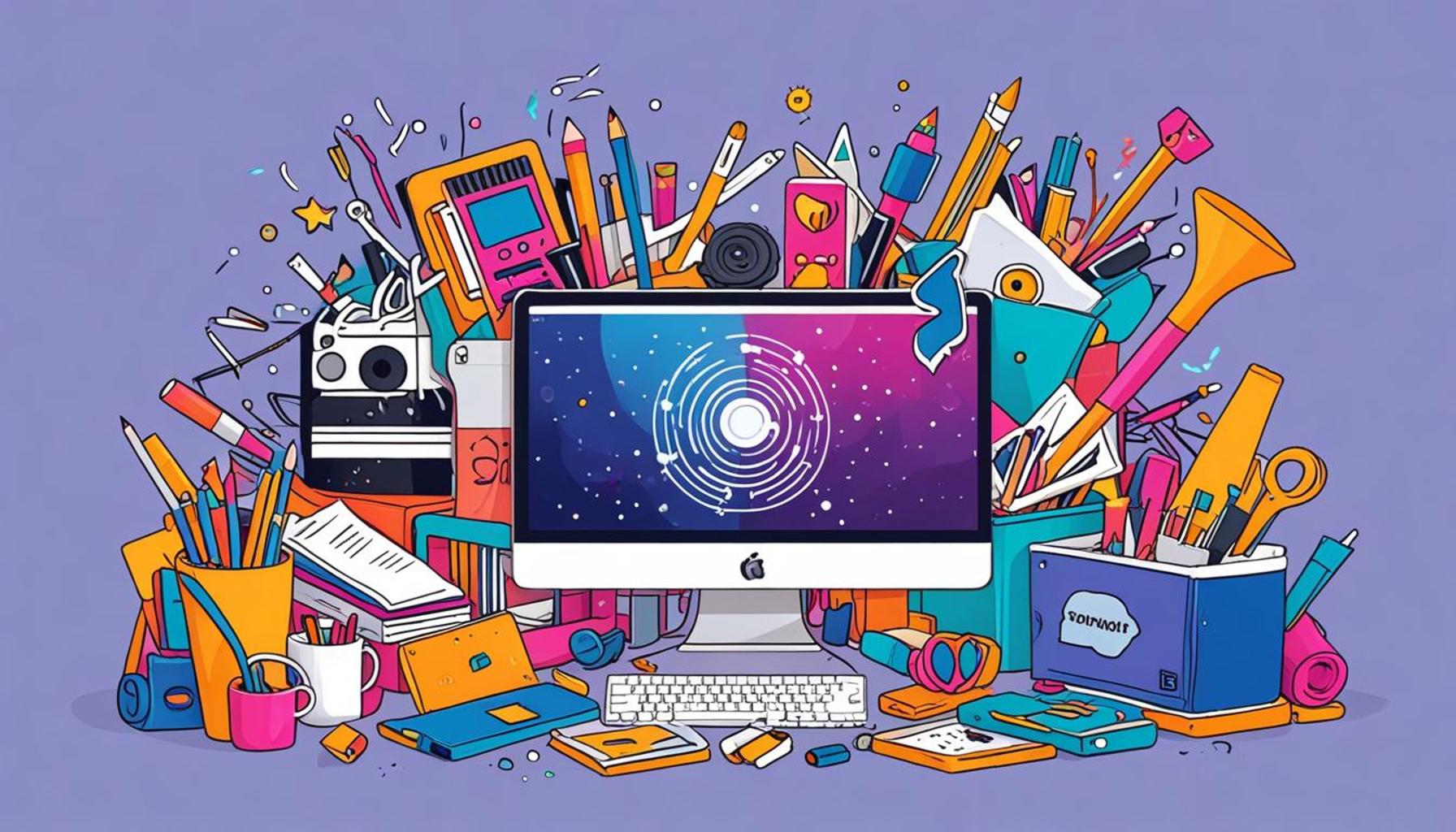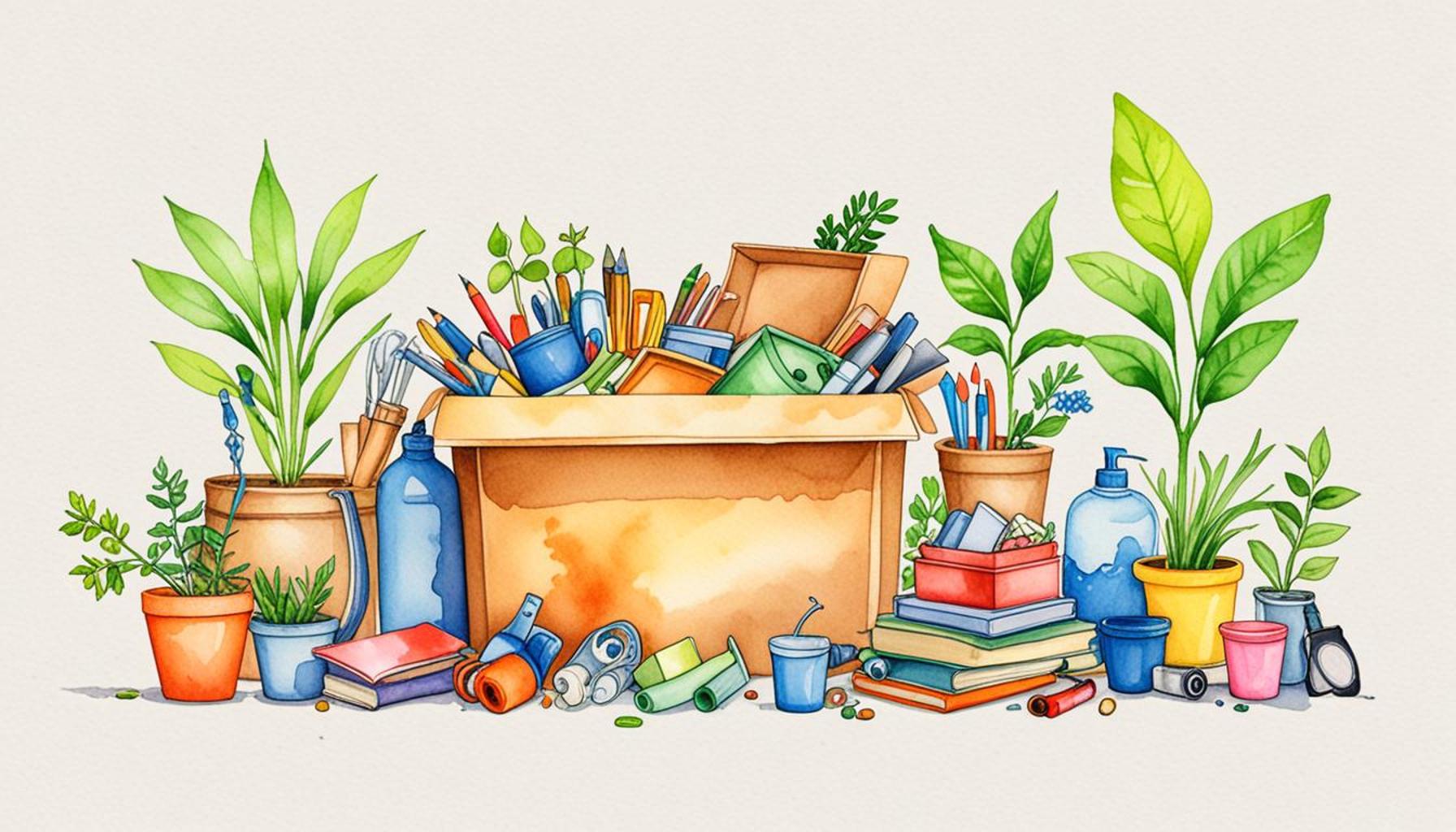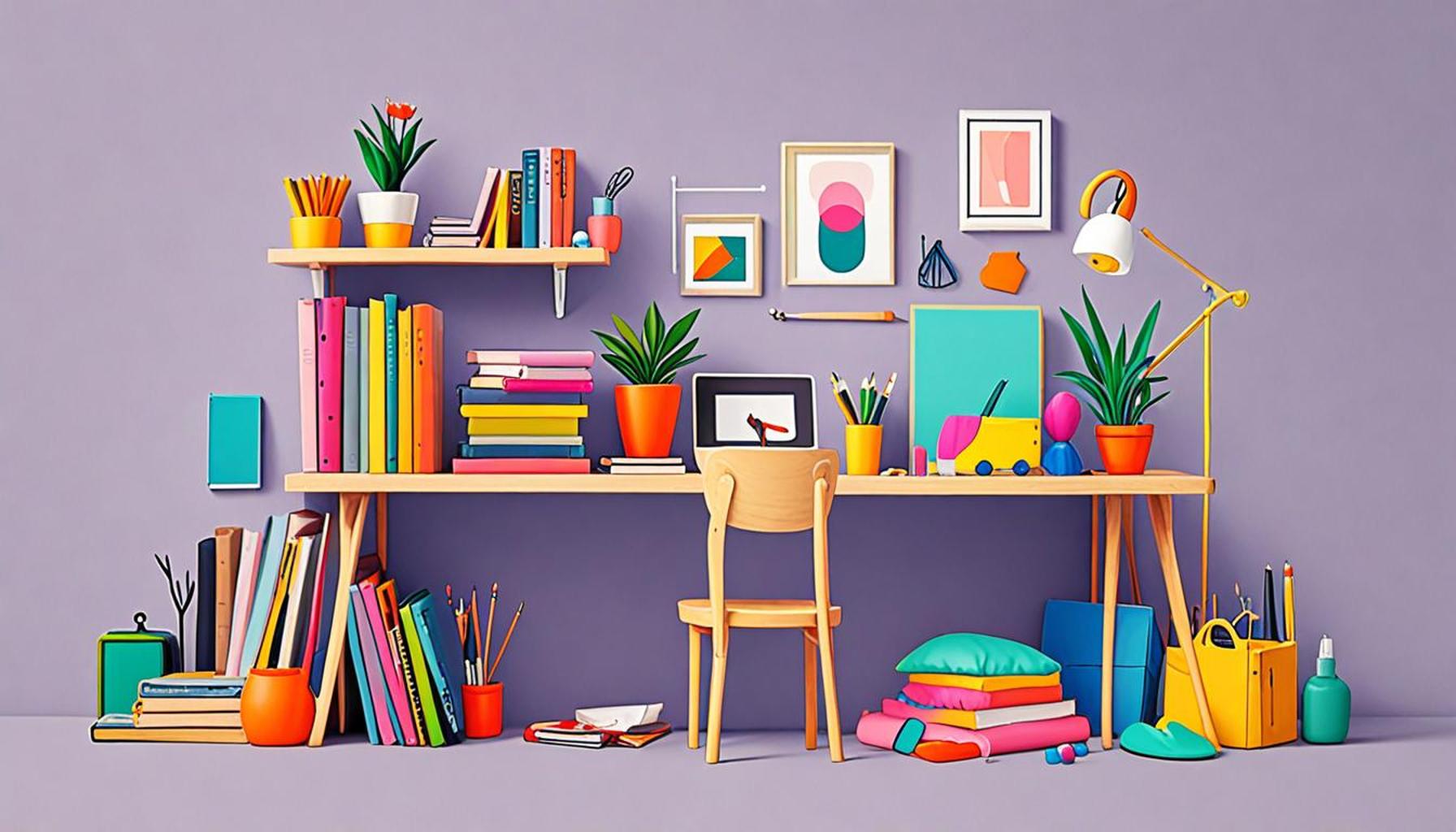The Art of Letting Go: Decluttering Techniques to Transform Your Space and Your Mind
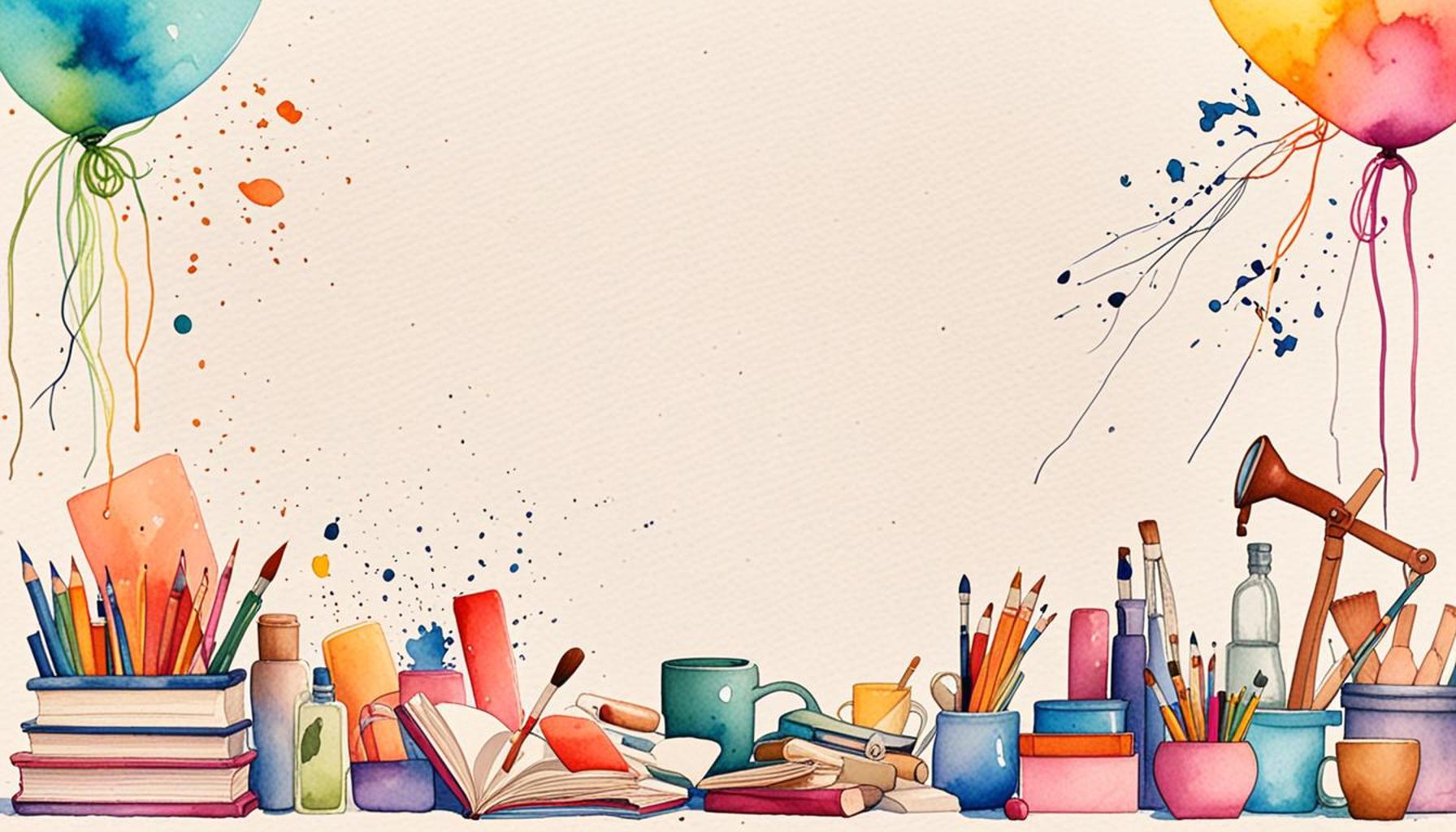
Embrace the Freedom of Minimalism
In a society increasingly characterized by materialism, the importance of letting go is often underestimated. Clutter transcends mere physical possessions; it infiltrates our minds, draining our creativity while muddling our focus. Ridding ourselves of excess—both tangible and intangible—can provide a refreshing and rejuvenating experience that reaches beyond mere organization.
Envision stepping into a home that exudes peace, where:
- Your living space exudes an air of tranquility, instead of chaos.
- Every single item, from the couch to the books on your shelf, serves a specific purpose or elicits joy.
- Your mind is uncluttered, allowing you to dedicate attention to the pursuits that genuinely matter to you.
Decluttering is not simply a task; it involves reclaiming your life and transforming your environment, leading to profound mental clarity. By utilizing effective decluttering techniques, you can:
- Identify items that hold emotional significance—these might include heirlooms from relatives or gifts from friends that bring back fond memories.
- Prioritize the essentials by focusing on items that add value to your life while letting go of those that are no longer beneficial.
- Establish sustainable systems that prevent clutter from returning, such as the one-in-one-out rule, where you discard one item for every new item you bring home.
Throughout this transformative journey, you may stumble upon hidden treasures—like a journal from your early adulthood or forgotten artwork—that rekindle lost passions. More fundamentally, this journey can lead you to a renewed sense of self, highlighting what truly matters amidst the distractions of modern life.
As you delve into the art of letting go, understand that it is a continuous practice. Regular reflection on what you own can lead to greater fulfillment and contentment. So take the plunge; embrace minimalism not just as a trend, but as a lifestyle choice that advocates for mental well-being and enhanced creativity. Your path to clarity and peace is just a declutter away.
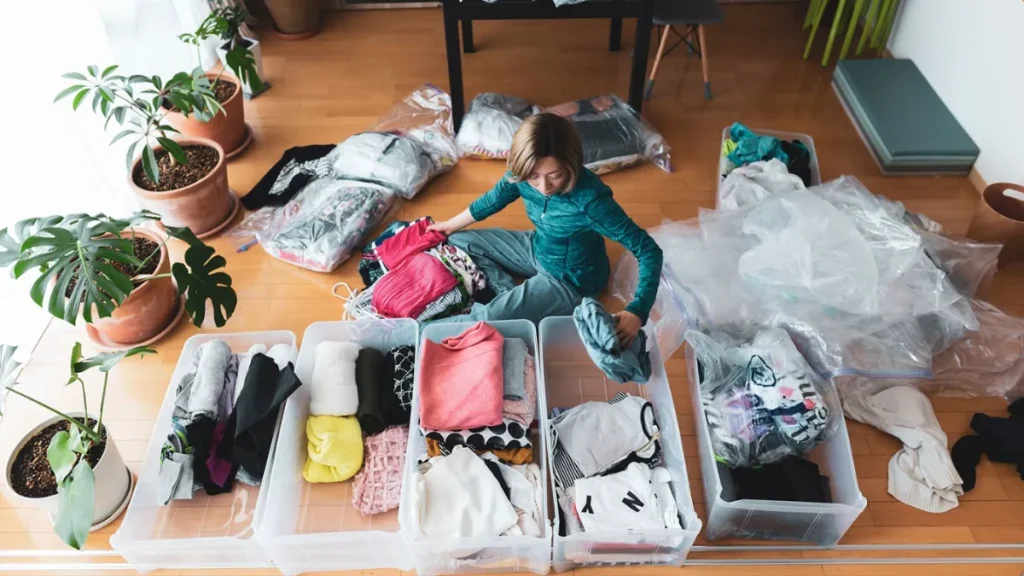
DISCOVER MORE: Click here to learn about intentional living practices
Understanding the Emotional Weight of Clutter
Before diving into practical decluttering techniques, it is essential to grasp the emotional connection many of us have with our belongings. Psychologically, items often symbolize cherished memories, accomplishments, or even aspirations. This can make the process of letting go feel overwhelming. Understanding the emotional weight of clutter is a pivotal first step towards decluttering.
Research shows that excessive clutter can trigger anxiety and stress, leading to what experts now refer to as “clutter fatigue.” Homes filled with disorganization can stifle creativity and hamper productivity, creating a vicious cycle that is hard to break. When your living space resembles a disorganized labyrinth, every task seems more daunting. This is why breaking free from the clutches of clutter is not only a pathway to an organized home but also to a healthier mind.
Four Effective Decluttering Techniques
Embarking on your decluttering journey may seem daunting, but implementing specific techniques can make the process bearable and even enjoyable. Here are four effective methods:
- The Marie Kondo Method: Inspired by the widely celebrated book “The Life-Changing Magic of Tidying Up,” this method encourages individuals to ask themselves whether an item “sparks joy.” By focusing on items that elicit positive emotions, you can effectively determine what to keep and what to discard.
- The Four-Box Method: This method entails using four boxes labeled: “Keep,” “Donate,” “Trash,” and “Repair.” As you go through your belongings, assign each item to one of the boxes. This adds a systematic approach to the process, ensuring that no item falls through the cracks.
- The 30-Day Minimalism Game: Popularized by bloggers and minimalists alike, this game challenges participants to declutter one item on the first day, two items on the second, and so forth for thirty days. By the end of the month, you will have purged 465 items from your space, a remarkably cathartic outcome.
- The One-Year Rule: If you haven’t used an item in the past year, consider letting it go. This rule helps you evaluate the true necessity of your possessions, making the decision-making process easier and less emotionally charged.
By engaging in these techniques, you create opportunities for self-discovery while simultaneously transforming your environment. The process illuminates patterns of attachment that may have gone unnoticed, revealing important insights about your priorities and desires.
As you explore decluttering, remember that it’s not just about physical space. Each item you decide to keep or let go prepares the groundwork for a more focused and peaceful mindset. Letting go may involve an emotional unraveling, but it also leads to newfound clarity and joy.
| Advantage | Description |
|---|---|
| Increased Mental Clarity | By removing physical clutter, individuals can experience reduced stress and enhanced focus, leading to a more productive mindset. |
| Enhanced Creativity | A tidy environment fosters inspiration, allowing creativity to flow freely and opening up new avenues for innovation and expression. |
| Better Time Management | With fewer distractions and a well-organized space, individuals can allocate their time more effectively, ultimately leading to greater efficiency. |
| Emotional Well-Being | Letting go of unnecessary items can be liberating, promoting a sense of accomplishment and emotional relief in one’s everyday life. |
The practice of decluttering, modeled by effective techniques, serves as a dual approach to both physical and mental transformation. Through actionable steps, anyone can embark on a journey to not only free their living space but also elevate their mental well-being. The integration of these techniques into daily routines will inevitably lead to profound changes over time. Hence, the discussion remains deeply relevant in today’s fast-paced world where the balance between our personal space and mindfulness is crucial for a fulfilling life.
DISCOVER MORE: Click here to enhance your daily life
Creating a Decluttering Plan: Taking Action with Intent
Once you comprehend the emotional aspects of clutter and have familiarized yourself with various decluttering techniques, the next logical step is to devise a structured plan. Having a clear outline can mitigate feelings of anxiety and create a roadmap toward a more organized environment. Here are some actionable strategies to help organize your decluttering efforts:
- Set Clear Goals: Start by identifying specific decluttering goals. This could range from clearing out a single room to tackling your entire home. By setting concrete objectives, you will be able to track your progress and feel a sense of accomplishment at each milestone.
- Schedule Decluttering Sessions: Treat decluttering as an appointment that deserves dedicated time. Mark it on your calendar, whether that means blocking off an afternoon or just a few hours during the week. This helps build accountability and prepares your mind to focus.
- Break It Down by Category: Instead of attempting to declutter an entire room at once, focus on specific categories such as clothing, books, or kitchen items. This is a principle often emphasized in the Marie Kondo Method and can help you work more efficiently without feeling overwhelmed.
- Start Small and Build Momentum: Begin with less emotional items, such as kitchen gadgets or stationery. This creates a sense of achievement early on, propelling you to tackle more challenging categories as your confidence builds.
Mindfulness and the Art of Letting Go
Incorporating mindfulness practices into your decluttering routine can significantly enhance your experience. By being present and intentional, you can better evaluate your attachments to items. For instance, you may realize that an item you once treasured no longer serves a purpose in your life. Here are some mindfulness strategies:
- Practice Gratitude: As you declutter, take a moment to express gratitude for the items that once served you. Acknowledging their role can ease the emotional burden associated with letting them go.
- Visualize Your Ideal Space: Picture what a clutter-free life looks like for you. Envisioning your ideal space can serve as motivation to let go of items that don’t align with that vision.
- Engage Your Senses: Pay attention to how your surroundings make you feel. Are certain items bringing you joy, or are they causing stress? Use this sensory awareness to guide your decision-making process.
The Long-Term Benefits of Decluttering
While the act of letting go can be emotionally charged, the long-term benefits of decluttering extend beyond a tidy space. Research indicates that simplifying your surroundings can lead to increased happiness and lower stress levels. A study by UCLA’s Center on Everyday Lives of Families found that individuals living in cluttered homes displayed higher levels of stress and felt more overwhelmed overall.
Moreover, a more organized space can lead to heightened creativity. With fewer distractions, individuals often experience clearer thinking and improved focus. As you proceed on your decluttering journey, you may find that it’s not just your space that transforms, but your mental landscape as well, creating room for new opportunities and growth.
Therefore, as you continue with your decluttering journey, understand that it is a comprehensive process of transforming not only your physical space but also enriching your mental well-being. Letting go can awaken a renewed sense of purpose in the way you interact with your belongings and the world around you.
DISCOVER MORE: Click here to delve deeper
Embracing the Journey of Letting Go
In conclusion, the art of letting go is more than a mere trend; it is a profound journey toward creating a harmonious living environment and a refreshed mindset. By implementing structured decluttering techniques, such as setting clear goals, scheduling dedicated time, and breaking tasks into manageable categories, you empower yourself to take meaningful steps toward a more organized life. Each decision to let go is not just about emptying space but also about making room for what truly matters.
Moreover, the integration of mindfulness in this process brings a deeper level of awareness, allowing you to appreciate the value of each item while consciously releasing what no longer serves your purpose. Practicing gratitude, visualizing your ideal space, and engaging your senses all contribute to a healthier relationship with your belongings.
As studies demonstrate, the long-term benefits of decluttering extend beyond aesthetics, fostering improved mental clarity, reduced stress, and renewed creativity. By addressing the emotional aspects of clutter, you not only enhance your physical space but also cultivate a refreshed mental landscape that invites new opportunities and personal growth.
Ultimately, the journey of decluttering is an invitation to embrace change, reclaim your space, and liberate your mind. As you embark on this transformative path, remember that letting go is not an end, but a new beginning—one that opens doors to a more fulfilling and intentional life.
